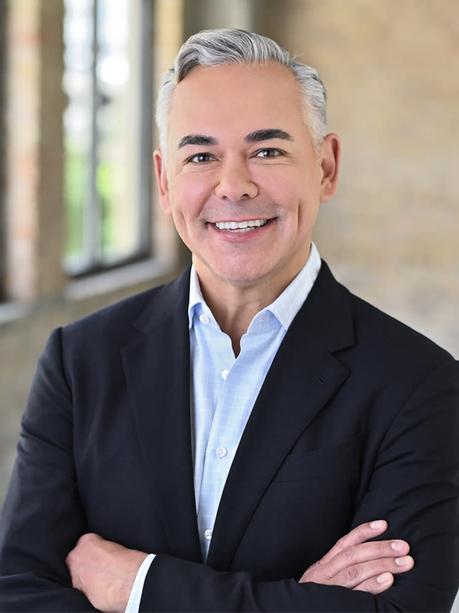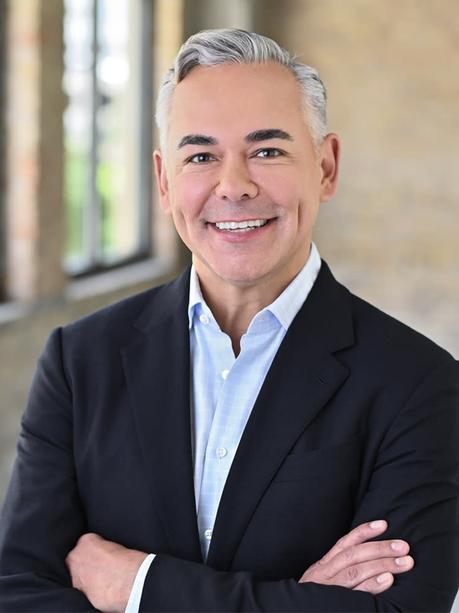The mass market for beauty products may be in flux, but Target Corp. only goes up.
According to the company's latest earnings call, beauty contributed 2.7 percent growth in the second quarter, alongside fashion, with net sales totaling $25.5 billion and beating Wall Street expectations. Within that, beauty rose 9 percent on a comparable basis, on top of double-digit growth a year ago.
More from WWDThe secret sauce is the right brand mix, a range of price points, an integrated digital strategy and a willingness to jump on trends early, said Rick Gomez, Target's executive vice president and chief commercial officer, in a wide-ranging interview with WWD.
"Beauty at Target has been a booming business for us. We have seen growth every year for the past five years, which has resulted in our beauty business doubling in size since 2019," said Gomez.
That success is in stark contrast to the broader mass market. In the first half of the U.S., hair and skin care grew by just 2 and 1 percent, respectively, while fragrance fell 1 percent and makeup fell 4 percent, according to Circana.
Among a slew of other factors, Gomez attributed Target's growth to having the right assortment - at the right time.
"Beauty is all about newness and innovation. Consumers want to try new products and new brands, and we have made a big commitment to launch novelties this year," he said, adding that thousands of stock-keeping units would be launched by 2025.
One of the successful launches is Blake Brown, the hair care brand created by Give Back Beauty in partnership with founder Blake Lively, which had the five best-selling hair care items at Target on launch day alone. "That was the largest hair care product launch in Target history," Gomez said. "It shows that if you get the right product, trendy, at an affordable price, it's very good for us."
Gomez also pointed out L'Oréal's Colorsonic, an exclusive to Target, alongside Tabitha Brown's Donna's Recipe and Jennifer Aniston's LolaVie. The latter is available through Target's partnership with Ulta Beauty, which currently includes shops-in-shop in approximately 800 doors and has given Target's range a wide range of price points.
"50 percent of our [beauty] The range is under $10, but value is important in the sense that consumers are looking for high quality products - they are also buying prestige," said Gomez. "It's about offering value at different price points and also offering quality products at an affordable price."
Just as widely as the price ranges vary, so does Target's beauty shopper. "We have a broad consumer base that varies in age and geography, and we have a wide range from Gen Alpha all the way up to the over 55s - we ensure we have something for everyone," he said. "Gen Alpha might like a nice brand like Elf Cosmetics, and the over-55s might like a brand like Roc Skincare."
While many of the successful brands have famous founders, Gomez said they are only part of Target's brand formula. "We are not a catalog and we think very carefully about which brands we carry," he said. "We look at prestigious brands, emerging brands, digitally native brands and of course our own brand. That is the magical mix."
In some cases, that means thinking small and capitalizing on micro trends to move the market into broader growth areas. "Trends come from social. The Unbrush was trending on TikTok. We jumped at it and within eight weeks we had the Unbrush on display in the store. Since then we have sold 27 shades; it was a huge hit and a big driver of growth."
One company underlined Target's willingness to identify trends in their early stages - and respond to them early.


"What sets Target apart is that they are in touch with the culture and also with the megatrends," said Osh Savur, chief marketing and brand officer at Maesa, which owns the Fine'ry, Being Frenshe and Kristin Ess Hair brands. are sold at Target. "By working with them as an incubator, they also see what we see and can validate those trends."
As an example, Savur pointed to Fine'ry, Maesa's perfume brand that debuted as a Target exclusive in 2023. "They had instinct, they carved space in the planogram and stood behind it in a way that could scale," she said.
At the time of Fine'ry's launch, industry sources estimated sales would exceed $20 million.
"We knew fragrance was a breakout category during COVID[-19]but the crowd began to move away from it. Target was able to put back what they saw happening in the marketplace, partner with us and launch a brand right on the cusp of where growth was happening," said Savur.
Capitalizing on trends early and discovering the next big thing is nothing new for Target. In 2005 it was Elf Beauty's first retail partner. Nearly twenty years later, that collaboration is still flourishing.
"We are their number one brand with more than 20 percent of their entire category," Tarang Amin, CEO of Elf Beauty, said in a recent interview.
As for Target's digital strategy, it isn't just localized to social media trends, as Gomez is gearing up to test new technologies to improve user experience.
"It's 20 percent of sales," Gomez said of Target's sales of digital beauty products. "We lean on new technology that makes things like virtual trying on lips, eyes and foundation possible. It has become a resource to learn more about products, after which shoppers can go to the store to make a purchase. It is truly omnichannel. We don't think of it as shopping physically and then shopping digitally; we all see it as shopping. You often see someone in the store with their phone open in their hand."
Another key growth area is the mini business, which has more than doubled in the last three years. The opportunities there are numerous, according to Gomez.
"There is a travel industry, and there is also a lot of experimentation and trying new things," Gomez said. "We do see people using minis as a trial and then coming back to buy the full size. It's a space we'll continue to lean into.
"We think minis will be great for stocking stuffers this holiday season. They are also great for everyday items like hand sanitizer and lip balm," he continued. "So minis are definitely a trend that we see during the school term and will continue through the holidays."
The best of WWDSign up for the WWD newsletter. For the latest news, follow us on Facebook, Twitter and Instagram.
